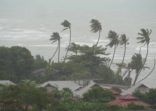What are some of the risks investors need to pay greater attention to amid market volatility?
In our recent cyclical forum in March, we talked about how significant uncertainty clouds the outlook as the global economy confronts a stagflationary supply shock that is negative for growth and will likely spur further inflation. While our tentative base case forecast calls for above-trend growth in developed markets overall, there remains increased risk of higher inflation and lower growth, particularly as the Fed and other central banks aim to get inflation under control. More specifically, we see recession risk over the next 12-to-18 months to be as high as 30%.
The outlook is also clouded by potential nonlinearities related to already fragile initial conditions. Supply chain disruptions were already widespread due to COVID-19, weighing down output and pushing up costs and prices in many sectors. This has been made more difficult recently given the resurgence of COVID in China and associated city lockdowns. Furthermore, the risk of an expanded conflict in Europe could lead to even more volatility.
In this current market environment, we believe investors need to get comfortable with significant uncertainty and volatility.
To what extent are the Fed rate hikes already factored in, and how should investors adapt their income strategy accordingly?
Despite the geopolitics, central banks have pressed ahead with tightening monetary policy, accompanied by hawkish statements from central bankers. Inflation targeting has taken precedence over concerns about the risks of slowing economic growth. As a result, the Fed is aiming for multiple rate hikes this year and next, which the market is already mostly pricing in to the forward curve.
In our view, this environment of generally tightening policy across both the developed and developing world – albeit in an uneven fashion – is creating relative value opportunities across countries, both within the currency space and the interest rate space, as well as some interesting alpha-oriented opportunities. Furthermore, we’ve seen some key segments of the spread market widen in spread to the point where valuations are beginning to look quite attractive, particularly in the higher quality end of the risk spectrum.
At the same time, in this market we’re focused on capital preservation, flexibility and liquidity, enabling us to take advantage of attractive opportunities as they present themselves.
How can investors maximise their income potential by expanding the opportunity set they focus on?
We believe it’s important for investors to appreciate that it is likely going to be more challenging to generate the types of returns we have seen in the last few years. That means investors need to be careful not to take too much risk to generate the same level of income generation or price appreciation that they have become accustomed to.
Instead, we believe it’s important for investors to broaden their investment opportunity set, expand geographically, and be willing to give up some liquidity in order to generate higher returns, or generate returns with more resiliency or downside protection.
So this means moving out of more generic forms of corporate and sovereign credit and into less-liquid segments of the market, such as global commercial and residential real estate (both debt and equity), select opportunities in direct private lending, and other more complex asset-backed instruments. These sectors provide additional yield premium, but also the type of resiliency that’s hard to source in the more traditional public markets today. We also believe that targeting select opportunities within emerging markets will be attractive over the course of the next several years.
The Fund Selector Asia Investment Forum Philippines was held virtually on 12 May 2022 and was sponsored by Janus Henderson Investors, Jupiter Asset Management, Pimco and TT International.
Find out more about what was discussed and the strategies that were presented here: https://fundselectorasia.com/events/fsa-investment-philippines/

















